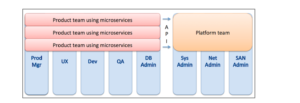Build Satellite Applications with AWS Ground Station

At AWS re:Invent 2018, Amazon Web Services (AWS) announced AWS Ground Station service. AWS Ground Station is a fully managed network of 12 ground station antennas located around the world and connected to AWS global network backbone. Customers request antenna access time and then are able to download data from their own satellites back to the cloud. AWS takes care of making sure the data is delivered and providing the backbone to store and process that data in any AWS region.
Customers will be able to download data from multiple satellites at the same time, and will even be able to continue downloading when unplanned outages affect the network.
The result is that customers can now capture multiple streams of data and move them to the cloud easily. This ensures almost continual coverage and lowers costs for sending data from space to Earth.
Many of the satellites orbiting Earth today are Low Earth Orbit (LEO) satellites, fundamental for Earth observation data. Satellites are getting smaller and smaller, smaller than a shoebox. Smaller satellites can go more places and collect more data. There are predicted to be 16,000 satellites in Earth’s orbit in the next decade.
To process data from satellite, a connection needs to be established using an antenna. Parabolic antennas only capture data every so often, so the data you access has been cached. An antenna alone can cost $1 million or more, creating a huge barrier to entry. (A small satellite could cost around $10 million).
Lockhead Martin’s Verge is a Virtual Resilient Ground that works side-by-side with AWS. Verge provides low-cost antennas that are connected to AWS network and are able to download data down to earth and move it into AWS cloud.
Together AWS and Lockhead Martin provide secure, efficient and scalable ways to manage data ingestion and control for orbiting satellites without having to buy any ground satellite infrastructure yourself.
Charlie Bell, Senior Vice President of AWS stated, “Today, we are giving satellite customers the ability to dynamically scale their ground station antenna use based on actual need. And, they will be able to ingest data straight into AWS, where they can securely store, analyze, and transmit products to their customers without needing to worry about building all of the infrastructure themselves.”
DIFFICULTY OF SATELLITE DATA COLLECTION AND PROCESSING
Satellite data needs to be transmitted, stored, processed, and analyzed. Previously, companies and government organizations would build or lease ground antennas to communicate with satellites in order to gain access to the data they needed. This was time-consuming and cost prohibitive. They typically had to set up antennas all over the globe so they could download data when needed and not have to wait for a satellite to pass over a specific location again.
With AWS Ground Station, you can worry more about your satellites and less about everything going on the ground. The barrier to entry for space telemetry is lowered. We expect to see customers like self driving car customers
HOW IT ALL WORKS
AWS Ground Station gets data into the cloud much faster – in less than a minute. Ground Station antenna time is scheduled in the AWS Management Console, then users downlink satellite data and uplink commands. The data can then be processed in real-time.
The AWS Management Console makes it easy to get started with AWS Ground Station with the ability to schedule antenna access time and launch an Amazon EC2 instance to communicate with the satellite. The console provides users visible insights into antenna locations and communication windows. Pricing is structured on a pay-by-the-minute system, ensuring customers only pay for the antenna access time they use. Average customers save up to 80% on their ground station costs by paying for antenna access time on demand.
Satellite data at a Ground Station can be processed immediately in an Amazon Elastic Compute Cloud (Amazon EC2) instance, stored in Amazon Simple Storage Service (S3), have AWS analytics and machine learning services applied to the data, and then move it seamlessly to other regions and processing facilities. For example, satellite images can be processed immediately by machine learning algorithms in the cloud and create and update databases of maps.
Many of the AWS Ground Station antennas are located in AWS Regions, providing AWS and Lockheed Martin customers with low-latency, local access to other AWS services to process and store data.
Lockheed Martin Verge can be selected as the preferred downlink via either the AWS Ground Station console or from the Verge management console. After Verge has received and processed the data, customers in AWS Regions can access it through their virtual private cloud (VPC). The VPC allows you to connect to your own hybrid and on-prem cloud to process the data.
WHAT’S NEXT FOR AWS GROUND STATION?
In early 2019, 10 more AWS Ground Stations will open, with more to follow. AWS Ground Station is changing the face of global information collection and processing. Barriers to entry are breaking down for startups, researchers, and more.























